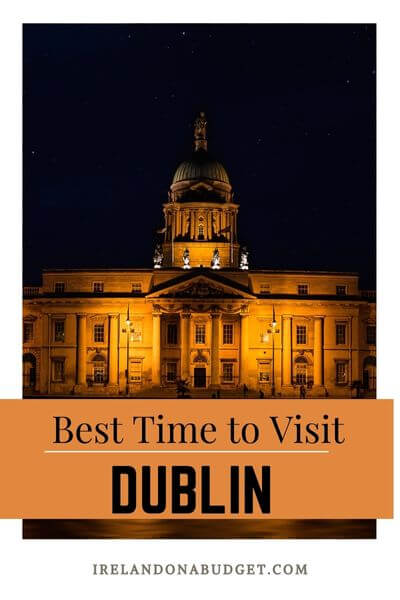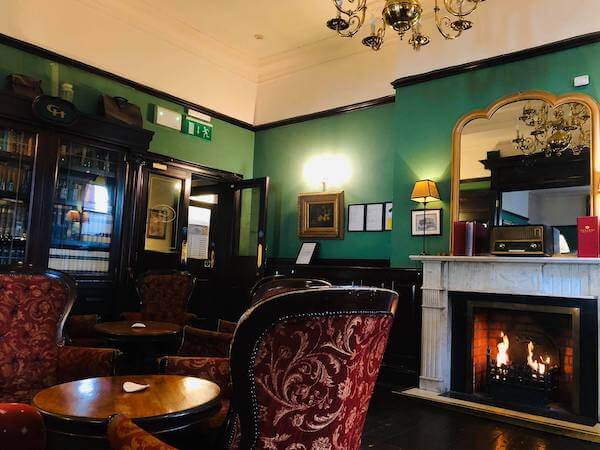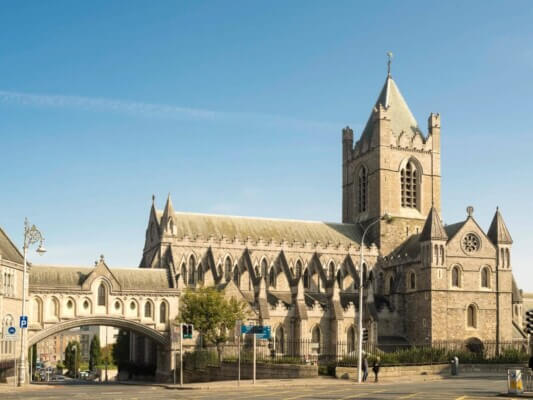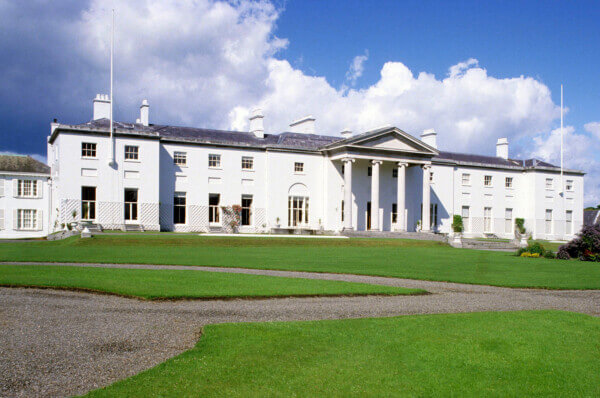The Best Time to Visit Ireland
Most travelers to Ireland will most likely land in Dublin first, and for many of them, it’s where they will spend the majority of their time.
But when is the best time to visit Dublin? Read on to find out more.
 This page contains affiliate links and I may earn compensation when you click on the links at no additional cost to you.
This page contains affiliate links and I may earn compensation when you click on the links at no additional cost to you.
Of course, there are other places to see in Ireland too, so remaining in Dublin isn’t always a necessity.
However, if your heart is set on visiting Ireland's capital city, don't let anyone stop you.

- Book the best tours and guides on Tripadvisor, Viator or GetYourGuide
- Get reliable travel insurance with Travel Insurance Master
- Get the best flight tickets with Aviasales
- Rent a comfortable car via Discovercars
- Find the best accommodation on booking.com or BandBIreland
Dublin in a Nutshell
Dublin is an energetic city that is full of charm and a place that I'm sure you will want to return to again and again.
There is a lot to see and do any time of year in Dublin, plus Ireland’s climate is fairly temperate, albeit changeable, so there are no extreme changes in weather to contend with.
Summer, fall, winter, and spring each bring something different to the city.
It really depends on what you’re looking for. This will determine the best time to visit Dublin.
If you want to avoid the tourist season – and the crowds – come during what is known as “the shoulder season,” which is during the spring (April and May) or in the fall (September and October).
The weather is still mild enough at this time of year.

In fact, it can be surprisingly warm as heatwaves are known to occur in Ireland at either the beginning or at the end of the summer season.
Summer in Dublin (June-August)
Average Temperature: The average temperature in Dublin during the months of June, July, and August are between 16 and 20 degrees Celsius, which is between 60 and 68 degrees Fahrenheit.

At times, it can be much warmer than that, especially if Ireland experiences a hot spell. August tends to be wetter than the other summer months, so be sure to bring a jacket and an umbrella.
Popular activities for tourists: cycling, kayaking, walking, eating, and drinking in pubs.

As I write this, the hit “Summer in Dublin” by Irish rock band Bagatelle comes to mind.
They never got the international recognition they deserved, but they are still an excellent group and that song is probably their most popular one.
If you don’t mind the crowds, Dublin is a fun place to be during the summer months.
There is a lot of action around the Temple Bar section of the city, which is where Dublin’s trendiest pubs are located.
The revelers you’ll find in this area of Dublin tend to spill out on the streets with pints in hand as traditional musicians play inside.
Some of the most popular pubs in this area of town include:

- The Temple Bar (aka Flannery’s) is possibly the most photographed pub in Ireland and has been a fixture in the city since the 1840s. This bar is also known for stocking a huge selection of Irish whiskey.
Read More: Oldest Whiskey Distilleries in Ireland
- The Old Storehouse was designed in the typical Victorian fashion that you’ll see in other older pubs across central Dublin.

The Old Storehouse pub in Dublin. Photo courtesy of The Old Storehouse Facebook. You’ll get great food at the Storehouse, in addition to plenty of the “Black Stuff” (also known as Guinness).
Entertainment starts at 3 p.m. every day and includes traditional musicians as well as Irish dance performances.
- The Long Hall Pub isn’t technically in Temple Bar, but it is very close. Located on Great St. George’s Street, it is a true Victorian classic.

The Victorian-styled Long Hall Pub in Dublin. When it comes to spending time in a traditional Dublin pub, any time of year is the best time to visit Dublin. Photo courtesy of the Long Hall Facebook. When you visit, look out for the ornate carvings in the woodwork behind the bar and the elegant chandeliers overhead, among other fine architectural details.
- The Vintage Cocktail Bar (known locally as “VCC”) is one of those trendy pubs in Dublin that you should visit.Inspired by 1920s Prohibition, the place looks like a typical speakeasy complete with art deco-style details. Be sure to reserve a seat on OpenTable before you go as it’s a popular spot with tourists and locals. Lots of great cocktails to choose from, along with finger food.

This time of year is perfect for guided walking tours as the days stretch on forever during the summer months (sunset is close to 11 p.m. at the height of the summer).
You can also cycle in Dublin.
The city has over 120 miles of cycle routes, part of its ever-expanding bike scheme. In addition, there are over 100 bike stations throughout the city with credit card kiosks nearby. The public bicycle rental scheme has operated in the city since 2009.
If you'd rather take a tour, Lazy Bike Tours is a fun way to see Dublin by electric bike. Short group tours are led by an experienced guide and are €40 per person. Other tours are also available.

The company ranks number 8 out of 144 activities ranked by TripAdvisor.
Read More: Discover Dublin's Top 10 Tours
Fall in Dublin (September-November)
Average Temperature: The average temperature in Dublin during the months of September, October, and November is about 14 to 18 degrees Celsius, which is between 57 and 62 degrees Fahrenheit. Expect crisp, fall-like days in Dublin during this time.
Popular activities for tourists: cycling, walking, and museum visits.
The fall months are a great time to visit Dublin.
Not only is it quieter from a tourism perspective, but the lines to some of the city’s most popular attractions are also shorter.

Some of those popular attractions include Trinity College, a short walk from the city center.
Walk in the footsteps of Oscar Wilde, Samuel Beckett, Jonathan Swift, and Bram Stoker, who all studied at the oldest college on the island of Ireland.

Stop off at other popular attractions like Dublin Castle, the EPIC The Emigration Museum, and The Guinness Storehouse.
Fall is festival season in Dublin. Here are some of the festivals you can enjoy if you’re visiting Dublin at this time of year.
The Dublin Fringe Festival
If you’re interested in discovering the best in Ireland's arts scene, be sure to check out the Dublin Fringe Festival, which normally takes place in September.
The festival is the ideal platform for new and emerging Irish and international contemporary performing arts companies.
Culture Night

Culture Night is an annual celebration of the arts in Ireland.
Free events place in locations across the country on the third Friday in September each year.
Late openings at museums and other cultural venues throughout Dublin and other cities in Ireland are par for the course.
Dublin Festival of History
If you’re a lover of history, you’ll want to visit Dublin during the annual Dublin Festival of History.
The festival includes over 140 history lectures, walks, exhibitions, films, and more. All events are free, but you must book in advance.
Be sure to check out its series of podcasts.
Dublin Theatre Festival

This is Europe’s oldest theater festival featuring emerging and established artists in the areas of theater, ballet, and opera.

If you're visiting Dublin in the fall, how about an evening of whiskey and cheese pairing at the Irish Whiskey Museum, a port-tasting dinner at The Porterhouse Temple Bar, or the chance to participate in a food trail in collaboration with some of Dublin’s best restaurants?
Choose from Tourradar's Ireland's Tours and Trips – all at an affordable price
Bram Stoker Festival
Did you know that Bram Stoker, the author of the Gothic horror novel “Dracula,” was born in Dublin?

To celebrate his legacy, his work and his impact on literature and popular culture, the City of Dublin pulls out all the stops during its Bram Stoker Festival.
Be prepared for lots of horror-filled fun!
Halloween
Ireland is the place to be at Halloween. After all, it’s where the holiday first began.
While there are certainly Halloween-inspired events going on throughout the city, you may want to venture outside of Dublin to experience Halloween in a big way.

Dubbed the “biggest and scariest Halloween festival in Ireland, the Spirits of Meath Halloween Festival is a month-long festival that takes place in October and November.
You can find ways to get there from Dublin on the Spirits of Meath website.
Christmas Markets, mid-November through Christmas Eve

If you’re in Dublin in late November, you’ll see the city center awash in Christmas decorations and colorful lighting.
Walk along Dublin’s streets at this time of year and you can’t miss the many buskers belting out holiday tunes.

Christmas markets were once confined to mainland Europe, but in recent years, they have become really popular in Ireland, too. And Dublin is no exception.
If you’re in Dublin during this period, the most popular one is the Christmas market that takes place at Dublin Castle.
Keep an eye on the castle website for details on this year's event.
Dublin in the Winter (December-February)
Average Temperature: The average temperature in Dublin during the months of December, January, and February hover around 4 to 6 degrees Celsius, which is between 39 and 41 degrees Fahrenheit.

Ireland rarely gets a lot of snow. In fact, if temperatures do drop below freezing, it’s more of a problem with icy roads than anything.
So, if you are driving, be cautious. Be sure, also, to wear several layers as the dampness can make it seem a lot colder than it really is.
Popular activities for tourists: holiday shopping, museum visits, and bar hopping.
While Dublin isn’t exactly on everyone’s radar in the winter months, there is some merit to traveling there during this time.
Fares are a lot cheaper and accommodation is also less costly.

Given the really short days in Ireland during the winter months, it’s a good idea while in Dublin to check out the city’s free museums.
After you’re done visiting the many indoor attractions around the city, be sure to seek out Dublin’s coziest pubs.
Here are two recommendations:
Slattery's Bar on Capel Street is one of those bars that oozes Dublin's heritage.
It’s also a place that is cozy enough for a pint or two while you soak up the history that is on its walls. It is known for having the best traditional Irish breakfast in Dublin.
The Library Bar, which is part of the Central Hotel on Exchequer Street has an open fire, ideal for those long winter evenings when you’re just longing for a bite to eat and a drink to wash it down.

The bar has brunch, lunch, and dinner menus. If you’re in between museum visits, the soup of the day and brown bread are priced at an affordable €6.
If it’s a traditional Irish music session you’re after to while away the long winter evenings, some of the pubs that will satisfy include The Celt on Talbot Street, where there’s traditional music seven nights a week.

If you are traveling with a group of 30 or more, enjoy a special 3-course dinner and show for €49. If not, simply order a pint, sit back and soak up the atmosphere.
The Confession Box on Marlborough Street is as good as it gets when it comes to traditional Dublin pubs.
Its name comes from the fact that during the Irish War of Independence, soldiers were asked to confess their sins to the resident priest! You’ll find trad sessions at the weekends in this Dublin pub.
O'Donoghue's is where The Dubliners and Christy Moore made their mark on Dublin’s music scene.

You’ll find traditional Irish music sessions seven nights a week at this popular watering hole.
Sit back, enjoy a Guinness, and a toe-tapping session. Be sure to take a look at the many photos of Ireland’s musical talent on the walls.
If you are still in Ireland close to Christmas, be sure to check out Carols by Candlelight, the annual holiday event at Christ Church Cathedral.

Musicians and singers dressed in period costumes perform classics like “O Come All Ye Faithful” and more in a setting that is illuminated by candles.
Spring in Dublin (March-May)
Average Temperature: While springtime weather in Dublin is still considered chilly, the promise of longer days provides some hope from the winter darkness.

Temperatures hover between 8 and 12 degrees Celsius, which is between 46 and 53 degrees Fahrenheit. Be sure to bring a jacket and dress in layers.
The annual St. Patrick’s Day celebration is vastly different from what you may be familiar with here in the U.S.
Floats, colorful costumes, and dyed hair are just some of what you can expect from this fun parade.
It is always held on March 17th in the city center.

Rather than celebrate for one day, Dublin pulls out all the stops and hosts a five-day schedule of events for everyone to enjoy, including the above-mentioned parade.
Events include guided walks, food fairs, musical performances, and more.
April and May are great times to visit Dublin. The weather is getting warmer and more and more people are venturing outdoors.
Why not check out some of Dublin’s prettiest public parks? Here are some to consider:

Phoenix Park – this is the largest enclosed public park in Europe. It is about a 1 ½ mile walk from O’Connell Street.
Originally a royal hunting park during the 1660s, the park was opened to the public in 1747.

It is now home to Áras an Uachtaráin, the residence of the president of Ireland, as well as Dublin Zoo and the Victorian People’s Flower Gardens, which is free to visit.
Walk around the park and enjoy the many fallow deer that inhabit it.
Phoenix Park is open 24 hours a day, 7 days a week, all year round. It is free to visit as is Áras an Uachtaráin.
St. Stephen’s Green– until the mid-17th century, St. Stephen’s Green was nothing more than a marshy common used for sheep and cattle grazing, public executions, and witch burnings.
Today, it is a place of refuge for Dubliners and tourists alike seeking some quiet time from the hustle and bustle of the city.
You’ll see a number of statues and memorials to various historical figures, including a bronze bust of the Irish revolutionary heroine Countess Markievicz in this beautiful city center park, which got its name from St. Stephen's Church and leper hospital, which existed in the area in the 13th century.
Credit: Office of Public Works
Iveagh Gardens – these beautiful Victorian gardens are beside the National Concert Hall and are a popular spot during the spring and summer months.

The gardens are open all year round. They are free to visit.


